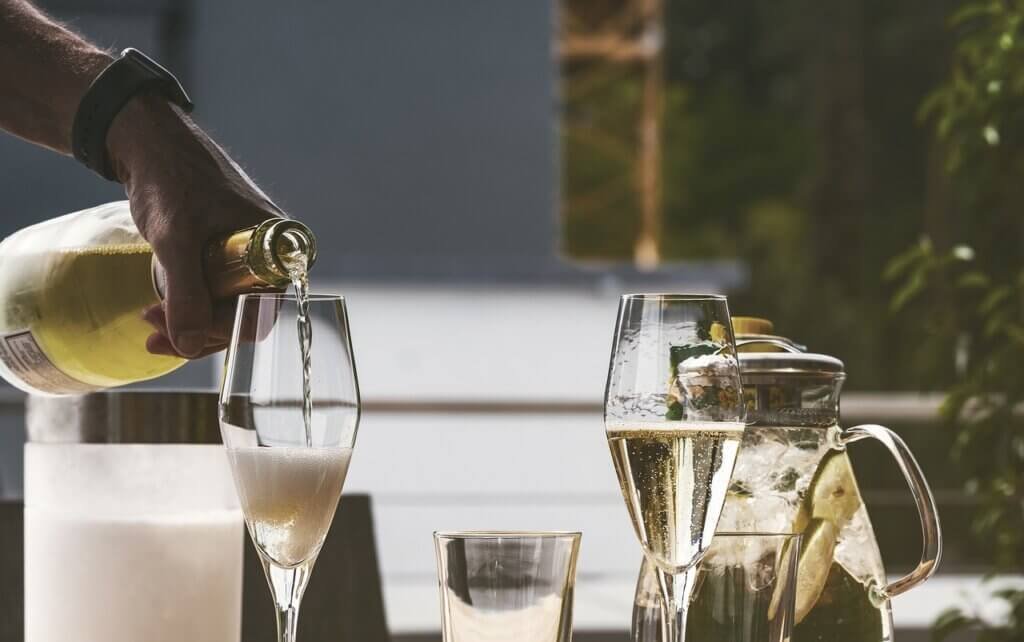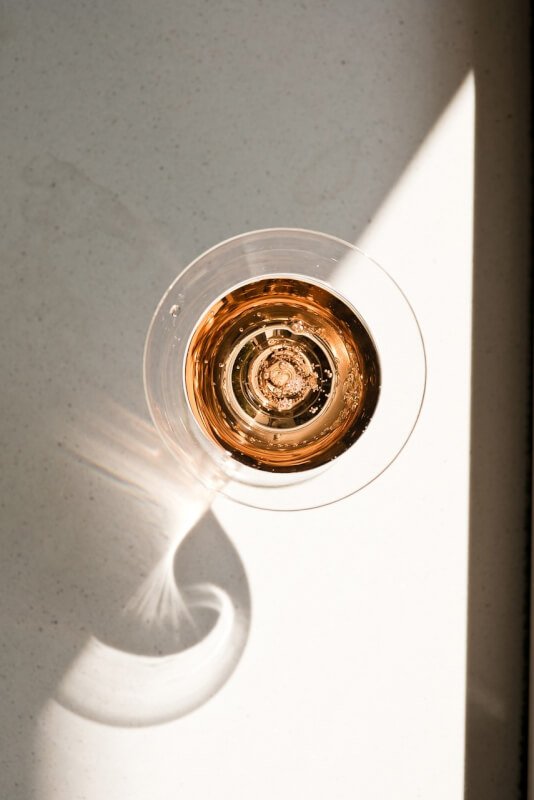Imagine indulging in a velvety chocolate mousse, each spoonful melting on your tongue, while sipping a rich, full-bodied red wine that perfectly complements its decadence. Or how about savoring a zesty lemon tart, the tangy citrus singing harmoniously with a crisp, refreshing white wine? The art of pairing wines with desserts is not only a science but also a delightful journey of discovering the perfect symbiosis between flavors. In this article, we will explore the intricacies of this art form and unlock the secrets to achieving an unforgettable match made in culinary heaven.

Understanding Wine and Dessert Pairings
When it comes to indulging in a delicious dessert, many of us don’t often think about pairing it with a glass of wine. However, the art of pairing wines with desserts can elevate the flavors and create a truly memorable dining experience. By understanding the balance of flavors, the types of wine that complement specific desserts, and the importance of considering factors such as acidity and sweetness, you can unlock a whole new world of culinary pleasure.
Why Pairing Wine with Desserts Matters
Pairing wine with desserts is not just about finding a drink to accompany your sweet treat; it’s about enhancing the flavors and creating a harmonious balance. When done right, the combination of the right wine and dessert can elevate both, taking your taste buds on a delightful journey. A well-paired wine can enhance the sweetness, complement the texture, and even cut through the richness of a dessert, leaving you with a perfectly balanced and satisfying experience.

Balance in Flavor Profiles
One of the key principles of pairing wine with desserts is achieving a balance in flavor profiles. This means considering the levels of sweetness, acidity, and richness in both the wine and the dessert. Ideally, you want the flavors to complement each other, rather than overpowering one another. A well-balanced pairing will allow the different elements to shine while creating an overall cohesive and enjoyable taste experience.
Factors to Consider
When it comes to pairing wine and desserts, there are several factors to consider. The sweetness level of the dessert is an important factor to keep in mind. You want to choose a wine that can match or slightly surpass the sweetness of the dessert without becoming cloying. Additionally, the acidity of the wine can play a crucial role in cutting through the richness of certain desserts. Lastly, considering the body and intensity of the wine can help create a harmonious pairing, with lighter wines complementing delicate desserts and richer wines standing up to more robust flavors.

Matching Wine and Dessert Types
Sweet Wines with Sweet Desserts
When it comes to sweet desserts such as fruit tarts or crème brûlée, a natural pairing choice is a sweet wine. Dessert wines, late harvest wines, and even some fortified wines like Sauternes can provide a perfect balance to the sweetness of these desserts. The richness and complexity of sweet wines can complement the flavors of fruits, caramel, and creamy elements found in many sweet treats.
Contrasting Wine and Dessert Flavors
Sometimes, contrasting flavors can create a stunning pairing experience. For example, a tart lemon-flavored dessert can be wonderfully complemented by the sweetness of a late harvest Riesling. The citrus notes of the dessert can be enhanced by the acidity of the wine, creating a refreshing and balanced combination. Similarly, a dry Riesling can cut through the richness of a creamy dessert, providing a contrasting yet delightful experience.
Balancing Wine Acidity with Dessert Sweetness
Acidity can be a powerful tool when it comes to pairing wine with desserts. The right balance of acidity can help cut through the sweetness of a dessert, preventing it from being overwhelming on the palate. For example, pairing a sweet berry dessert with a slightly acidic wine like a Beaujolais can create a harmonious balance, with the wine’s acidity showcasing the bright flavors of the berries.
Pairing Light Wines with Delicate Desserts
For lighter, delicate desserts, it’s important to choose wines that won’t overpower the flavors. Light wines such as Moscato, Prosecco, or a delicate rosé can be a wonderful accompaniment to desserts like meringues or fruit-based pastries. The lightness and subtle flavors of these wines can enhance the delicate textures and subtle sweetness of the desserts without dominating them.
Pairing Rich Wines with Rich Desserts
When it comes to rich, decadent desserts like chocolate-based treats or caramel desserts, reaching for a rich wine can create a truly indulgent experience. Late Bottled Vintage Port or a Tawny Port can provide the perfect balance to the deep flavors of dark chocolate or caramel. The richness and complexity of these wines can complement and elevate the richness of the desserts, creating a truly decadent pairing.
Complementing Chocolate-based Desserts with Wine
Chocolate desserts are a favorite indulgence for many, and finding the perfect wine pairing can take the experience to a whole new level. When it comes to chocolate, opting for a wine that is slightly sweeter and has a higher tannin content can provide a beautiful balance. Port wines, with their rich flavors and velvety texture, are often considered a classic choice. Additionally, red wines like Cabernet Sauvignon or Zinfandel can pair wonderfully with dark chocolate desserts, thanks to their robust flavors and tannic structure.
Popular Wine and Dessert Pairings
Champagne and Strawberries
There is something irresistibly elegant about the pairing of Champagne and strawberries. The light, effervescent nature of the Champagne complements the sweet and juicy flavors of the strawberries, creating a delightful contrast. This classic pairing is perfect for celebrating special occasions or simply indulging in a luxurious treat.
Riesling and Apple Pie
The bright acidity and fruity notes of a Riesling make it an excellent companion to tart desserts like apple pie. Rieslings with a touch of residual sugar can provide the perfect balance to the tartness of the apples, enhancing the flavors and creating a harmonious pairing. The wine’s acidity also helps cut through the richness of the pie crust, creating a well-rounded experience.
Port and Dark Chocolate
The marriage of Port wine and dark chocolate is a match made in dessert heaven. The intense flavors and velvety texture of a good-quality Port beautifully complement the richness and complexity of dark chocolate. The sweet, fortified wine provides a perfect balance to the bitter notes of the chocolate, resulting in a truly indulgent pairing.
Moscato and Fruit Tarts
For those who prefer a lighter, refreshing pairing, Moscato and fruit tarts are a winning combination. The slight effervescence and sweet floral notes of Moscato bring out the vibrant flavors of fresh fruits, creating a delightful contrast. This pairing is perfect for warm summer days or as a refreshing finale to a meal.
Sauternes and Crème Brûlée
Sauternes, a sweet French wine known for its richness and complexity, is a perfect partner for decadent desserts like crème brûlée. The wine’s honeyed, apricot flavors beautifully complement the creamy custard and caramelized sugar of the dessert, resulting in a truly luxurious pairing experience. The duality of flavors creates a harmonious balance that is sure to impress any dessert lover.
Sherry and Nut-based Desserts
Sherry, with its unique nutty and caramel-like flavors, is an excellent choice for pairing with nut-based desserts. Whether it’s almond cake, pecan pie, or baklava, the savory notes of Sherry enhance the nuttiness of these desserts. The wine’s distinct flavors provide a wonderful counterpoint to the sweetness of the desserts, resulting in a truly satisfying pairing.

Understanding Flavor Profiles
To truly master the art of wine and dessert pairing, it’s important to understand the different flavor profiles of wines and how they can complement specific desserts. Here are some key flavor profiles to consider:
Sweet Wines: Dessert Wines, Late Harvest Wines
Sweet wines are characterized by their higher sugar content, which can range from mildly sweet to lusciously sweet. Dessert wines like Sauternes, late harvest Rieslings, or Ice Wine fall into this category. These wines often have notes of honey, dried fruits, and sometimes floral characteristics. They pair well with desserts that have a similar level of sweetness and can enhance the rich, decadent flavors of many sweet treats.
Tart Wines: Lemon-flavored Wines, Dry Riesling
Tart wines are known for their high acidity and bright, crisp flavors. Wines that are lemon-flavored or have a touch of citrus acidity fall into this category. Dry Riesling, with its refreshing acidity and citrus notes, is a prime example. These wines can cut through the richness of creamy desserts or balance the sweetness of tart fruit-based desserts, adding a refreshing element to the pairing.
Rich Wines: Late Bottled Vintage Port, Tawny Port
Rich wines are often fuller-bodied and have higher alcohol content. Late Bottled Vintage Port and Tawny Port are prime examples of rich wines. These wines are characterized by their intense flavors, often showcasing notes of dark fruits, chocolate, and spices. The richness and complexity of these wines can complement the depth of flavors in rich desserts, adding layers of decadence to the pairing.
Light Wines: Moscato, Prosecco, Rose
Light wines are known for their delicate flavors, lower alcohol content, and sometimes a touch of effervescence. Moscato, Prosecco, and Rosé wines fall into this category. These wines are often refreshing and can subtly enhance the flavors of delicate desserts without overpowering them. They pair well with lighter, fruit-focused desserts or those that have a delicate texture.
Tips for Successful Wine and Dessert Pairings
Pairing wine and desserts can be a fun and rewarding experience. To ensure a successful pairing, keep these tips in mind:
Consider the Intensity of Flavors
When pairing wine with desserts, consider the intensity of flavors in both the wine and the dessert. A delicate dessert may be overwhelmed by a bold, robust wine, while a rich dessert may require a wine with enough presence to stand up to its flavors.
Balance the Wine and Dessert Sweetness
The sweetness level of both the wine and the dessert should be taken into account. Ensure that the sweetness of the wine matches or slightly exceeds that of the dessert to create a balanced pairing. If the wine is too sweet, it may overpower the dessert, while if it is not sweet enough, it may taste overly tart and clash with the dessert’s flavors.
Play with Contrasting Textures
Textures can greatly enhance the pairing experience. Consider how the textures of the wine and the dessert interact with each other. A creamy dessert can be wonderfully complemented by a wine with crisp acidity, while a dessert with crunchy or nutty elements can be accentuated by a wine with velvety smoothness.
Experiment with Regional Pairings
Pairing wine with desserts can be an excellent opportunity to explore regional specialties. Different wine regions often have traditional dessert pairings that can create a unique and memorable experience. Delve into the regional delicacies and discover new and exciting combinations.
Don’t Forget About Fortified Wines
Fortified wines, such as Port, Sherry, or Madeira, can add a whole new dimension to dessert pairing. Their unique flavors, higher alcohol content, and often sweeter profiles can create a delightful pairing experience. Don’t limit yourself to table wines; venture into the world of fortified wines and unlock a whole new realm of dessert pairings.

Serving Wine with Desserts
Pairing the right wine with your dessert is only the first step. To fully enjoy the experience, it’s important to serve the wine correctly. Here are some tips to keep in mind:
Temperature Matters
The temperature at which a wine is served can greatly impact its flavors and overall enjoyment. Sweeter wines are best served chilled, as the cold temperature helps balance the sweetness and acidity. Lighter wines, such as Prosecco or Moscato, can be enjoyed chilled as well. On the other hand, richer, full-bodied wines like Port are often served at slightly warmer temperatures to enhance their flavors.
Choosing the Right Glassware
Selecting the right glassware is essential for fully appreciating the flavors and aromas of both the wine and the dessert. For sweet, aromatic wines, opt for glasses with a larger bowl and narrower rim to concentrate the aromas. When it comes to dessert, consider the type of dessert you are serving. Tulip-shaped glasses can enhance the aromatics of creamy desserts, while wider bowls can showcase the layers of flavors in chocolate-based desserts.
Decanting Certain Wines
Decanting wine can be a valuable technique when it comes to certain dessert wines. For older Vintage Ports or other aged sweet wines, decanting can help remove any sediment that may have formed over time, ensuring a cleaner pour. Additionally, decanting can also help in aerating the wine, allowing it to open up and release its full potential.
The Art of Pacing
When serving wine with desserts, it’s important to keep in mind the pacing of the meal. Consider the progression of flavors from light to rich, and plan the pairings accordingly. Starting with lighter, more delicate desserts and wines and gradually moving towards richer, more robust flavors can create a well-balanced and enjoyable dining experience.
Exploring Unique Wine and Dessert Combinations
While classic pairings are always a safe bet, exploring unique and unexpected combinations can lead to delightful discoveries. Here are some lesser-known pairings worth exploring:
Ice Wine and Blue Cheese
The intensely sweet and complex flavors of Ice Wine can create a heavenly pairing when contrasted with the bold, salty flavors of blue cheese. The sweetness of the wine balances the sharpness of the cheese, resulting in a dynamic and memorable pairing.
Sparkling Rosé and Strawberry Shortcake
For a refreshing twist on the classic Champagne and strawberries pairing, try combining a sparkling Rosé with a luscious strawberry shortcake. The delicate bubbles and fruity flavors of the Rosé complement the sweetness of the strawberries, creating a sublime dessert experience.
Ruby Port and Pecan Pie
The caramel and nutty flavors of pecan pie find their perfect match in a Ruby Port. The wine’s rich, fruity notes and underlying tannins beautifully complement the gooey filling and crunchy pecans, resulting in a decadent and comforting pairing.
Vin Santo and Biscotti
Vin Santo, a traditional Italian dessert wine, pairs beautifully with the crunchy, almond-laden biscotti. The wine’s nutty flavors and honeyed sweetness enhance the flavors of the biscotti, making it the perfect choice for an after-dinner treat.
Late Harvest Gewürztraminer and Spiced Desserts
Spiced desserts, such as pumpkin pie or gingerbread, can be wonderfully complemented by a Late Harvest Gewürztraminer. The wine’s aromatic profile, with notes of lychee, rose petals, and spices, beautifully enhances the warm flavors of the dessert, creating a harmonious and festive combination.
Pairing Wine with Specific Dessert Ingredients
To elevate your wine and dessert pairing skills, it’s helpful to understand how specific dessert ingredients can interact with different wines. Here are some common dessert ingredients and their ideal wine companions:
Citrus-Based Desserts
For desserts that feature citrus flavors, such as lemon tarts or key lime pie, wines with bright acidity and citrus notes make ideal pairings. Consider wines like Sauvignon Blanc or Riesling to complement the zesty and tangy flavors of these treats.
Berry Desserts
Berries, with their sweet and tart flavors, pair beautifully with wines that share similar characteristics. A Pinot Noir or a fruity Beaujolais can harmonize with the brightness of berry desserts, creating a balanced and refreshing pairing.
Creamy and Caramel-based Desserts
Creamy desserts, like panna cotta or crème brûlée, benefit from wines with rich flavors and a touch of sweetness. Choose a late harvest Riesling or a Sauternes to enhance the creamy texture and caramel notes of these delectable treats.
Nutty Desserts
When it comes to nut-based desserts, fortified wines like Sherry or Madeira can be excellent companions. Their nutty aromas and flavors beautifully complement the nuttiness of the dessert, resulting in a harmonious and enjoyable pairing.
Chocolate Desserts
Pairing wine with chocolate desserts can be a match made in heaven, but it requires some thought. Dark chocolate desserts, with their intense flavors, pair wonderfully with wines that have enough structure, sweetness, and tannins to complement them. Consider reaching for a Port, Cabernet Sauvignon, or Zinfandel to create a delightful combination.
Common Pitfalls to Avoid
While the world of wine and dessert pairings is full of exciting possibilities, there are some common pitfalls to avoid. By being mindful of these pitfalls, you can ensure that your pairings are successful and enjoyable:
Overpowering the Dessert
When choosing a wine to pair with a dessert, it’s important to strike the right balance. Avoid choosing a wine that overwhelms the flavors of the dessert or masks its nuances. The wine should enhance, rather than overpower, the dessert.
Choosing Incompatible Flavors
While contrasting flavors can create interesting pairings, it’s important to ensure that the flavors are complementary and not conflicting. Choose wines that enhance the flavors of the dessert rather than clashing with them. Experimentation is key, but be mindful of the overall balance.
Ignoring Acidic Components
Acidity in both the wine and the dessert can play a crucial role in balancing flavors. Neglecting the importance of acidity can result in a pairing that feels unbalanced or too sweet. Consider the acidity of both the wine and the dessert to create a harmonious pairing.
Neglecting the Wine’s Age
When it comes to fortified wines or aged dessert wines, their aging process can greatly influence their flavor profiles. Neglecting the age of the wine can result in a pairing that doesn’t harmonize as intended. Consider the age and maturity of the wine when selecting a dessert to pair it with.
Improper Wine Storage
Proper wine storage is essential to maintain the quality and flavors of the wine. Poorly stored wine can develop off-flavors or lose its vibrancy, affecting the overall pairing experience. Ensure that your wine is stored at the correct temperature, away from light and heat, to preserve its integrity.
Understanding Personal Preferences
While guidelines and recommendations can be helpful, it’s important to remember that personal taste ultimately plays a significant role in wine and dessert pairings. Developing your own taste and preferences is part of the journey, and experimenting with different combinations can lead to surprising discoveries.
Developing Your Own Taste
Exploring wine and dessert pairings is a journey that allows you to discover your own preferences and tastes. As you try different combinations, pay attention to what you enjoy and what resonates with your palate. Trust your own judgment and embrace the joy of finding your favorite pairings.
Experimenting to Find Favorites
Don’t be afraid to step outside of the traditional pairings and experiment with unique combinations. The world of wines and desserts is vast, offering endless possibilities. By trying new pairings, you can uncover hidden gems and create your own signature combinations that bring you joy.
Considering Cultural and Regional Influences
Cultural and regional influences can greatly impact wine and dessert pairings. Exploring traditional pairings from different cultures can offer insights into unique flavor combinations and broaden your culinary horizons. Embrace the diversity of the world’s culinary traditions and let them inspire your own pairings.
Unlocking New Combinations
The beauty of wine and dessert pairings lies in the endless possibilities and combinations waiting to be discovered. By staying open-minded and embracing the joy of exploration, you can unlock new and exciting combinations that tantalize your taste buds and create memorable dining experiences. So, go forth and let your taste buds lead the way on this delicious journey of discovery!


